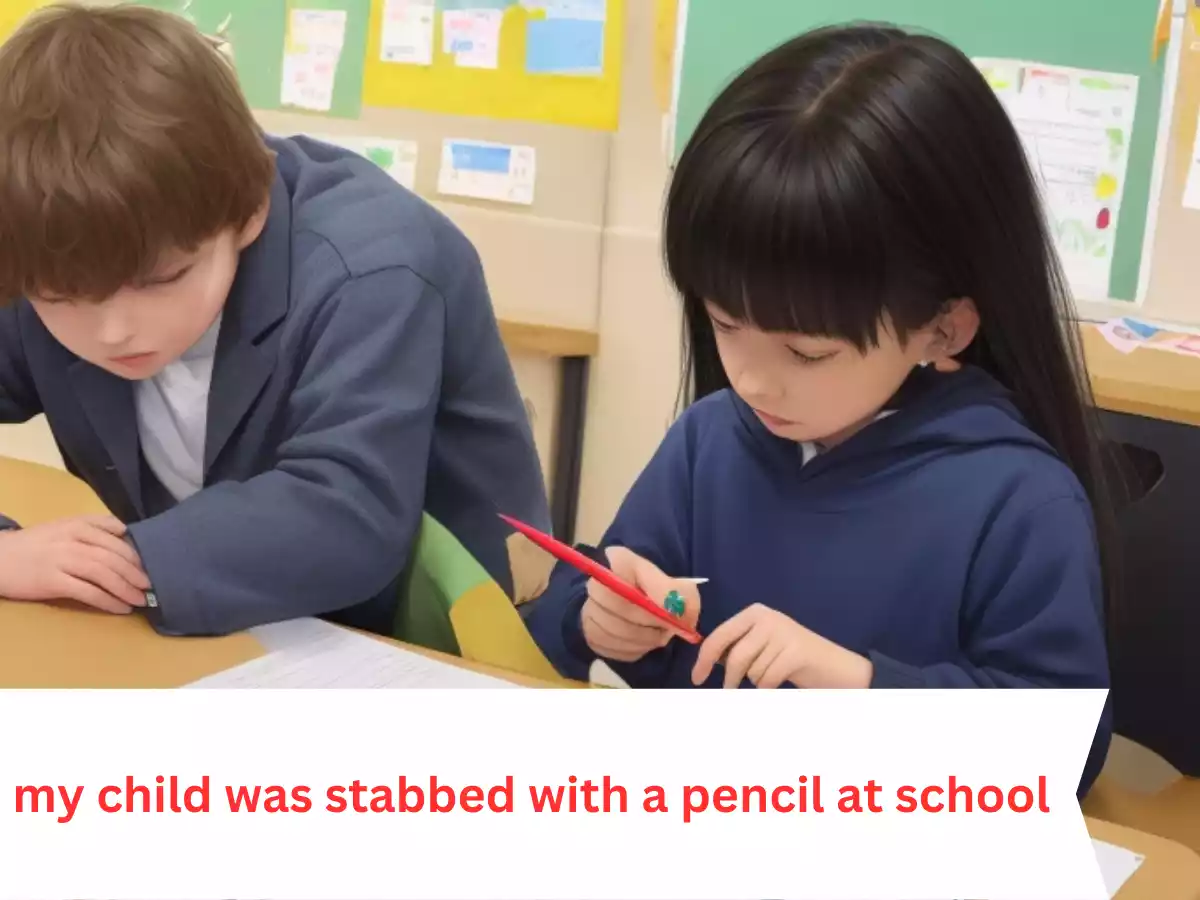Introduction: my child was stabbed with a pencil at school
Every parent’s worst nightmare is receiving a call from the school informing them that their child has been involved in an accident. Unfortunately, accidents can happen anywhere, even in the seemingly safe environment of a school. In this article, we will discuss the shocking and concerning incident of a child being stabbed with a pencil at school, how parents can cope with such a situation, and the steps schools can take to prevent such incidents from occurring.
The Unthinkable Happens: Understanding the Incident
What Exactly Happened?
The incident involving a child being stabbed with a pencil at school is a harrowing reminder that safety concerns can arise even in the most unexpected situations. The details of the incident may vary, but it typically involves one child accidentally or intentionally jabbing another with a pencil, leading to injury.
Initial Reactions and Emotions
As a parent, receiving news of such an incident can evoke a rollercoaster of emotions, including shock, anger, fear, and concern for your child’s well-being. It is essential to address your own feelings before taking the necessary steps to support your child.
Dealing with the Aftermath
Seeking Medical Attention
The immediate priority after learning about the incident is to ensure your child receives proper medical attention. Even seemingly minor injuries can lead to infections, so it’s crucial to consult a healthcare professional.
Communicating with the School
Contact the school to gather accurate information about the incident, including the circumstances surrounding it and the actions taken by school staff. Open communication with the school will help you understand the situation better and make informed decisions moving forward.
Supporting Your Child
Emotional support is paramount during this difficult time. Talk to your child, assure them that you are there for them, and encourage them to express their feelings. Consider consulting a counselor if your child is struggling to cope with the incident.
Preventing Future Incidents
School Measures and Safety Protocols
Schools play a pivotal role in ensuring the safety of their students. They should have comprehensive safety protocols in place to prevent such incidents. These may include strict supervision, clear guidelines on using stationery, and education on responsible behavior.
Parent-School Collaboration
Parents and schools should work hand in hand to create a safe and secure environment for children. Participate in parent-teacher meetings, join the school’s safety committees, and engage in discussions about safety measures.
Conclusion
The incident of a child being stabbed with a pencil at school is a distressing reminder that accidents can happen unexpectedly. As parents and educators, it’s our responsibility to ensure the safety and well-being of our children. By being proactive, communicating openly, and implementing effective safety measures, we can minimize the risk of such incidents and create a nurturing environment for our children to thrive.
FAQs
- How common are incidents like a child being stabbed with a pencil at school?
Such incidents are relatively rare, but it’s essential to address them seriously and take preventive measures. - What can I do to support my child’s emotional recovery after such an incident?
Providing a safe space for your child to express their feelings and seeking professional help if needed can aid in their emotional healing. - Are schools legally responsible for such incidents?
Schools have a duty to ensure the safety of their students, and legal responsibilities may vary based on circumstances and jurisdiction. - How can parents contribute to improving school safety?
Parents can actively participate in school safety initiatives, engage in open communication with the school, and promote responsible behavior at home. - Where can I find more resources on child safety and well-being?
You can find valuable resources on child safety and well-being through reputable educational websites, parenting forums, and local community organizations.























